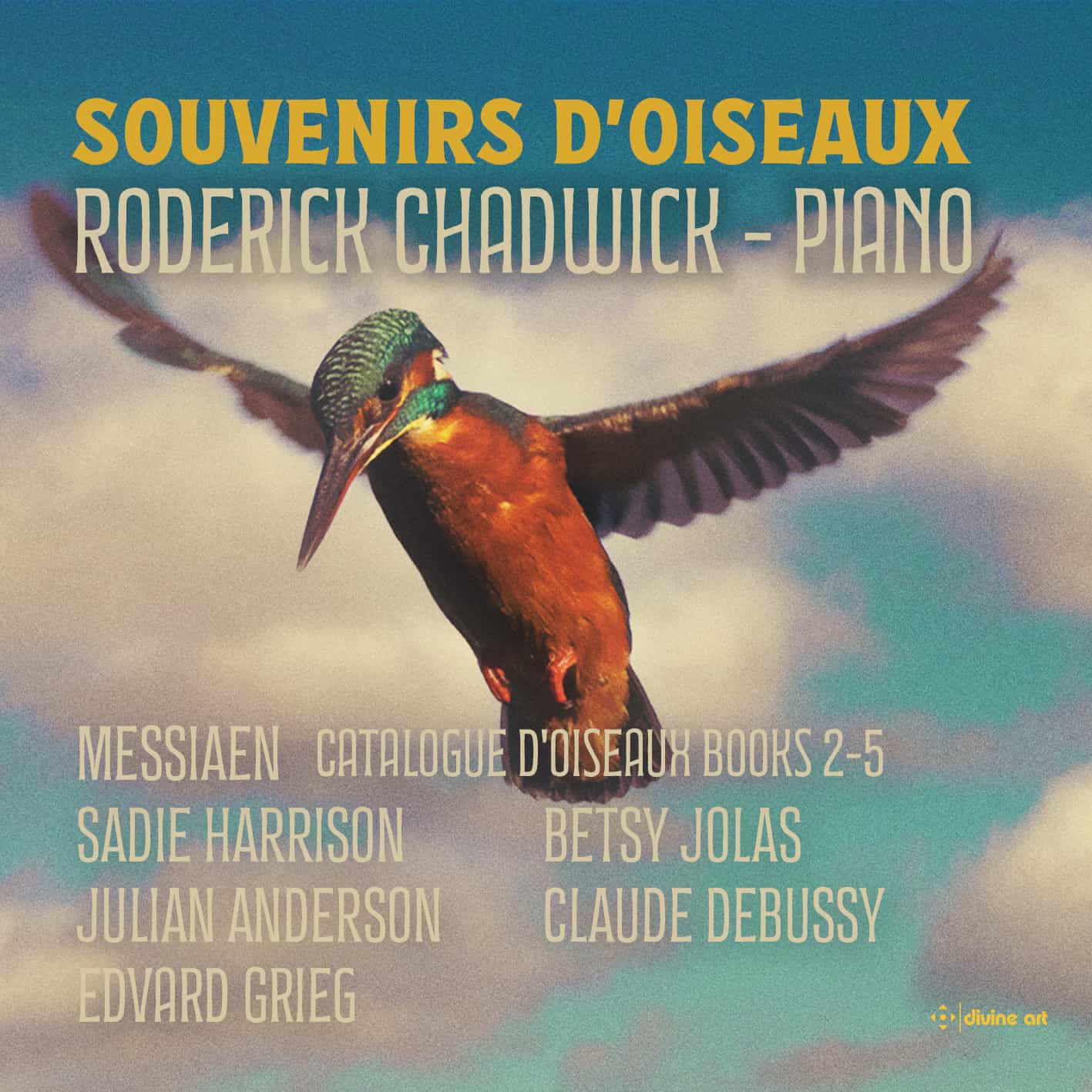American Record Guide
This unusual piano collection celebrates various kinds of bird song and effects of light through the course of the day and into the evening. The performances by Roderick Chadwick, a gifted pianist, professor, and writer, are lucid, wildly colorful, and a bit understated when need be. The inventive structure is organized around Messiaen’s Catalogue d’oiseaux with selections from books 2, 3, and 5, depicting a tawny owl, a bittern, a spectacled warbler, and others, as well as frogs croaking in a marshland and mists on the water represented by silence. A particular pleasure is ‘Le Traquet Stapazin’ from Book 2, which opens the album, alternating landscape painting with bird sounds, culminating in a nocturnal coda. Chadwick is a meticulous scholar specializing in this massive work; one couldn’t ask for a more compelling, authoritative performance.
The rest of the album offers a rich combination of composers representing radically different styles. Sadie Harrison’s gentle, inviting Lunae, an homage to the 19th Century piano nocturne, combines depictions of nature with the idea of love in varying guises (not unlike Messiaen). Julian Anderson’s Sensation, “a tour of the senses”, opens with ‘ She Hears’, a series of soft chords in honor of Imogen Holst, and ends with a celebration of dawn light. If parts of Betsy Jolas’s Chanson d’Approche sound like Messiaen, that is because Jolas was his student; indeed the piece has fragments of her mentor’s work, though it has its own individuality. Debussy’s Prelude 1:4, one of his most exquisite nocturnes, is played with subtle voicing; the realistic recording captures every nuance, including the distant, deep bass at the end.
This is all 20th Century music except for its conclusion, Grieg’s Nocturne from his Lyric Pieces, containing forward-looking hints of Delius and Debussy—Grieg at his most evocative, and beautifully played, a perfect coda.
@divineartrecordingsgroup
A First Inversion Company
Registered Office:
176-178 Pontefract Road, Cudworth, Barnsley S72 8BE
+44 1226 596703
Fort Worth, TX 76110
+1.682.233.4978












